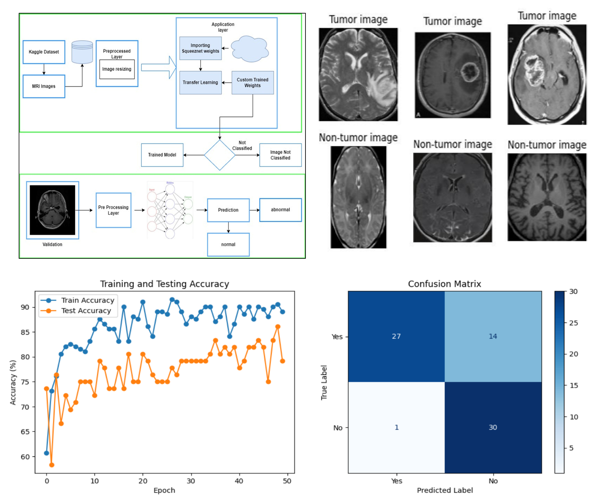Tumor Detection in MRI Data using Deep Learning Techniques for Image Classification and Semantic Segmentation
Main Article Content
Abstract
This study aims to apply image classification and semantic segmentation methods using deep learning for accurate and efficient tumor detection in brain MRI data. It looks at ways to get over issues including interpretability of the model and a lack of annotated data. A pre-trained VGG19 model and a basic convolutional neural network (CNN) were trained using a public dataset of 273 brain MRI images for the purpose of image classification. Techniques for regularization, transfer learning, and data augmentation were used. A U-Net architecture was trained using manually created masks from the same dataset for semantic segmentation, with several training setups investigated. With a mean test accuracy of 77.19%, the pre-trained VGG19 model surpassed the basic CNN in picture categorization. The U-Net model performed better for semantic segmentation after training on the entire dataset for two epochs as opposed to training on a subset for ten epochs. The work acknowledges issues including data scarcity and the requirement for model interpretability and scalability, which call for additional research, but also underlines the potential of deep learning for brain tumor identification.
Downloads
Article Details

This work is licensed under a Creative Commons Attribution 4.0 International License.





